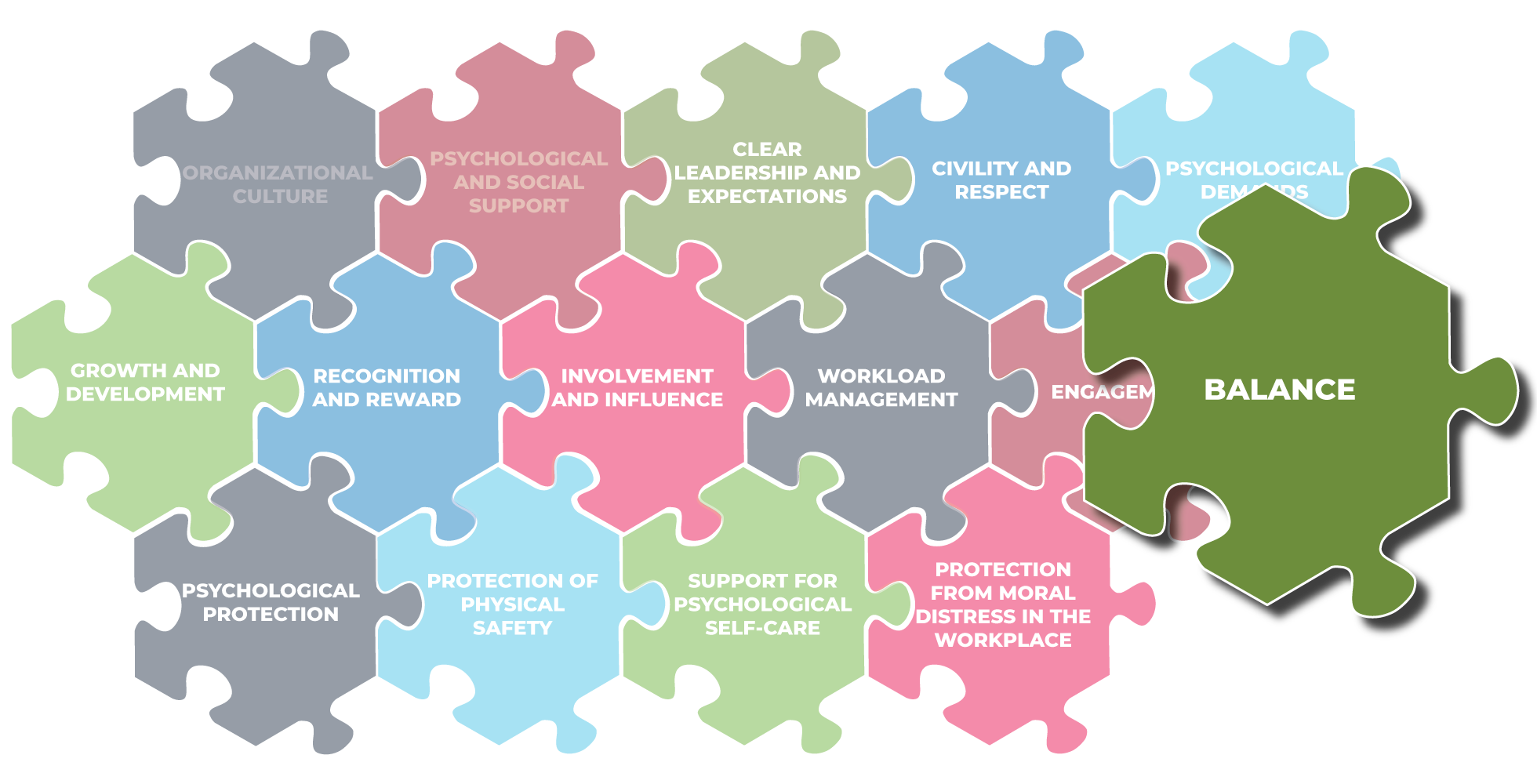In an organization where balance flourishes, employees experience robust support in juggling the complexities of work, family, and personal pursuits. Here, you'll discover a workplace ethos that champions your overall wellness, empowering you to excel professionally and personally.
What Does Balance Look Like in an Organization?
Employees in our midst might express:
- That their employer prioritizes their breaks
- Work demands are easily compartmentalized and kept separate from my personal life and responsibilities.
- My employer advocates for work-life balance
- Communication is frequent and welcomed. Employees engage in conversations with the employer or supervisors about balance.
- They feel supported by coworkers and supervisors during personal hardships
- Employees don’t report high burnout rates
- Employee’s home life doesn’t suffer due to work demands
KEY VALUES FOR BALANCE
- Flexibility
- Communication
- Thoughtfulness
- Kindness
- Empathy
- Understanding
Strategies for leaders and managers
These strategies should be observable, measurable, reasonable, and relevant. Some things leaders can do to promote balance in the workplace include:
- Promote flexibility for work arrangements when possible
- Encourage employees to go for a short walk, stretch, or do a quick meditation using a quiet room
- Provide incentives like education seminars on task management, work-life balance, or resources for being effective at work. Others can include a wellness bingo, team exercise, etc
- Encourage boundary setting. For example, encouraging unplugging after work hours or prioritizing self-care instead of taking too many overtime shifts.
- Ask for feedback from employees to get specific examples of what leadership support around balance can look like.
Strategies for workers
Employees can prioritize balance in regards to workplace psychological health and safety. Sometimes, jobs can demand a lot from someone, but here are some strategies to improve their balance:
- Practice Mindfulness Techniques: Incorporate mindfulness practices into your daily routine, such as meditation, deep breathing exercises, or mindfulness walks. These techniques can help reduce stress, increase self-awareness, and promote mental well-being in the workplace.
- Establish Personal Boundaries: Set clear boundaries between work and personal life to prevent work-related stress from spilling over into your personal time. Communicate these boundaries to your colleagues and supervisors and prioritize activities outside of work that rejuvenate and fulfill you.
- Take Regular Mental Health Breaks: Incorporate short mental health breaks into your workday to recharge and refocus. Use these breaks to engage in activities that promote relaxation and mental clarity, such as stretching, listening to music, or practicing a hobby.
- Engage in Regular Physical Activity: Incorporate regular physical activity into your daily routine to support both your physical and mental well-being. Whether it's going for a walk during lunchtime, participating in a fitness class after work, or practicing yoga, find activities that you enjoy and make them a priority.
- Talk to you employer about your schedule. Try a different line that might provide days off that are more convienant or different shift times to support your lifestyle.
- Regularly Assess and Adjust: Regularly assess your work environment, workload, and stress levels, and make adjustments as needed to promote balance and well-being. Be proactive in addressing issues that may arise and advocate for necessary changes to support your psychological health and safety in the workplace.










